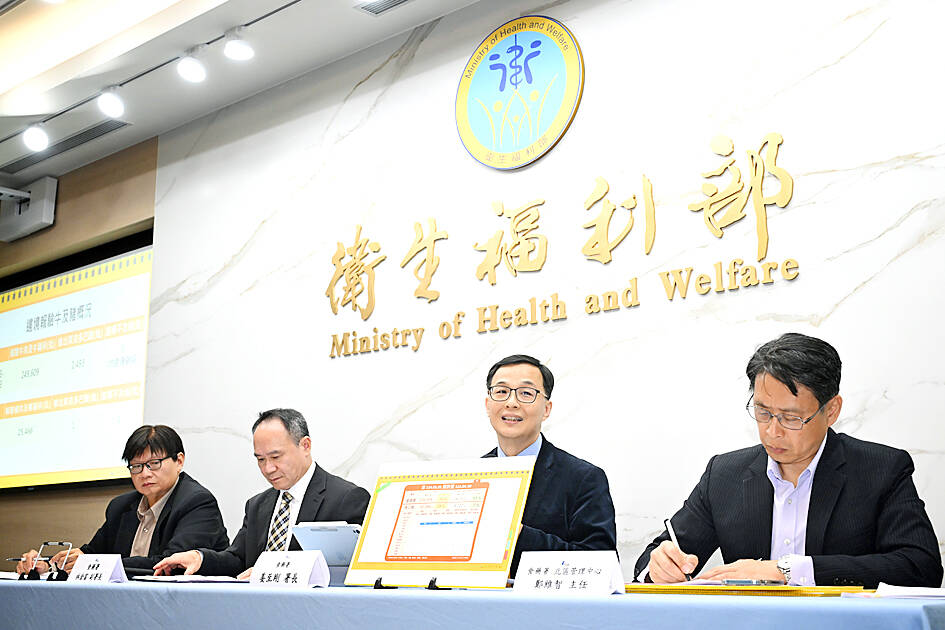The Food and Drug Administration (FDA) yesterday said that six batches of imported beef were found to contain ractopamine residues exceeding the legal maximum residue limit between 2012 and the end of last month, and all of the affected products were either returned or destroyed.
Local Chinese-language media on Sunday reported that a batch of imported pork had tested positive for ractopamine, an animal feed additive used in some countries to promote leanness in meat.
The report cited data from the FDA’s online pork monitoring dashboard, which showed that on Tuesday last week, a batch of pork imported from Australia tested positive for ractopamine at a concentration of 0.001ppm, which is a level within the maximum residue limit.

Photo: Chen Yi-kuan, Taipei Times
The detection was the first confirmed case of imported pork containing ractopamine since import restrictions were eased in 2021. The finding has raised concerns among several government agencies and lawmakers, prompting the administration to hold an impromptu news conference yesterday.
FDA Director-General Chiang Chih-kang (姜至剛) said the batch in question contained ractopamine at a concentration of 0.001ppm — one-tenth of the maximum residue limit of 0.01ppm — and was therefore legally permitted to enter the domestic market.
“Those that have passed border inspection would naturally be considered safe and be allowed to enter the domestic market,” he said, adding that food products sold domestically would also be randomly inspected.
Chiang said restrictions on imported beef containing ractopamine were eased in 2012, followed by the easing of restrictions on pork in 2021.
From Sept. 11, 2012, to April 30 last year, a total of 249,609 batches of imported beef underwent border inspection, with traces of ractopamine detected in 2,493 batches, he said.
Of these, six batches exceeded the legal maximum residue limit and failed inspection; all were either returned or destroyed, he added.
Between Jan. 1, 2021, and Wednesday last week, 25,466 batches of imported pork were inspected, and only one batch tested positive for ractopamine, and the concentration was within the legal limit, Chiang added.
Regarding random inspections of beef and pork products sold on the domestic market, Chiang said that of the 6,141 beef products tested, only one — a product imported from the US in 2021 — was found to contain ractopamine at 0.02ppm, exceeding the legal limit, while all 18,501 pork products tested during the same period passed inspection.
The administration’s online pork monitoring dashboard is intended to promote transparency by informing the public of inspection results, he said.
If any food product passes inspection, it is considered safe and falls within scientifically assessed, acceptable risk levels, he added.
The FDA said that current border inspection rates for imported pork range from 2 to 10 percent, and the frequency might increase for importers whose shipments have failed inspection.
However, since all imported pork batches have passed inspection for ractopamine residues, the administration does not plan to increase inspection frequency at this time, Chiang said.
The agency would not disclose the name of the importer or the distribution details of the batch that tested positive within the maximum residue limit, he said.

Taiwanese were praised for their composure after a video filmed by Taiwanese tourists capturing the moment a magnitude 7.5 earthquake struck Japan’s Aomori Prefecture went viral on social media. The video shows a hotel room shaking violently amid Monday’s quake, with objects falling to the ground. Two Taiwanese began filming with their mobile phones, while two others held the sides of a TV to prevent it from falling. When the shaking stopped, the pair calmly took down the TV and laid it flat on a tatami mat, the video shows. The video also captured the group talking about the safety of their companions bathing

US climber Alex Honnold is to attempt to scale Taipei 101 without a rope and harness in a live Netflix special on Jan. 24, the streaming platform announced on Wednesday. Accounting for the time difference, the two-hour broadcast of Honnold’s climb, called Skyscraper Live, is to air on Jan. 23 in the US, Netflix said in a statement. Honnold, 40, was the first person ever to free solo climb the 900m El Capitan rock formation in Yosemite National Park — a feat that was recorded and later made into the 2018 documentary film Free Solo. Netflix previewed Skyscraper Live in October, after videos

Starting on Jan. 1, YouBike riders must have insurance to use the service, and a six-month trial of NT$5 coupons under certain conditions would be implemented to balance bike shortages, a joint statement from transportation departments across Taipei, New Taipei City and Taoyuan announced yesterday. The rental bike system operator said that coupons would be offered to riders to rent bikes from full stations, for riders who take out an electric-assisted bike from a full station, and for riders who return a bike to an empty station. All riders with YouBike accounts are automatically eligible for the program, and each membership account

A classified Pentagon-produced, multiyear assessment — the Overmatch brief — highlighted unreported Chinese capabilities to destroy US military assets and identified US supply chain choke points, painting a disturbing picture of waning US military might, a New York Times editorial published on Monday said. US Secretary of Defense Pete Hegseth’s comments in November last year that “we lose every time” in Pentagon-conducted war games pitting the US against China further highlighted the uncertainty about the US’ capability to intervene in the event of a Chinese invasion of Taiwan. “It shows the Pentagon’s overreliance on expensive, vulnerable weapons as adversaries field cheap, technologically